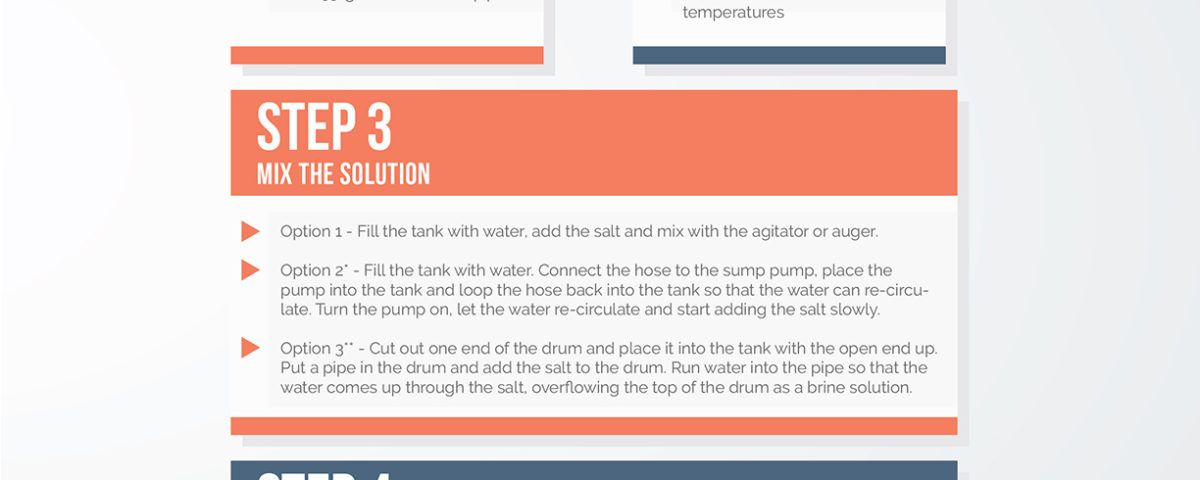
Deciding What to Include in Base Pricing Vs. A La Carte Extras
December 17, 2018
The Tax Cuts and Jobs Act (TCJA): Big News on Big Business Advantages for You
December 24, 2018One of the most common ways to prevent water from freezing in a portable toilet and causing damage is to add a brine solution of rock salt and water. Most portable restroom operators mix a large batch of brine at their home shop, fill up their truck(s) there and store the remaining brine for future use. Mixing a brine solution isn’t difficult. To learn how to do it, check out this infographic.
A rock salt and water brine is just one of a handful of ways to prevent freeze-ups. To learn about the others and for more information on winterization, read our article. You can also download our winterization white paper from the JohnTalk Vault. For free access, sign up for an account and log in.

Like this infographic? Share it with your friends and colleagues!
Get the JohnTalk “ALL-ACCESS PASS” & become a member for FREE!
Benefits Include: Subscription to JohnTalk Digital & Print Newsletters • JohnTalk Vault In-Depth Content • Full Access to the JohnTalk Classifieds & Ask a PRO Forum
Looking to Take Your Portable Restroom Business to the NEXT LEVEL? Download our FREE Guide: “Your Guide to Operating A Portable Restroom Business.”
Thinking About GETTING INTO the Portable Restroom Industry? Download our FREE Guide: “Your Guide to Starting A Portable Restroom Business.”
How to Mix a Brine Solution in 4 Easy Steps
1. Set Up a Mixing Station
- Option 1- Mixing/holding tank with agitator or auger
- Option 2*- Mixing/holding tank, sump pump and ½ inch hose
- Option 3**- Mixing/holding tank, 55-gallon drum and pipe
2. Determine the Appropriate Salt-to-Water Ratio
- ½ pound rock salt/gallon of water protects down to 26°F
- 2 pounds rock salt/gallon of water protects down to 0°F
- Note: A brine solution isn’t effective for sub-zero temperatures
3. Mix the Solution
- Option 1- Fill the tank with water, add the salt and mix with the agitator or auger.
- Option 2*- Fill the tank with water. Connect the hose to the sump pump, place the pump into the tank and loop the hose back into the tank so that the water can re-circulate. Turn the pump on, let the water re-circulate and start adding the salt slowly.
- Option 3**- Cut out one end of the drum and place it into the tank with the open end up. Put a pipe in the drum and add the salt to the drum. Run water into the pipe so that the water comes up through the salt, overflowing the top of the drum as a brine solution.
4. Pump the Solution Into the Truck
- To avoid salt water buildup in your pump, run fresh water through it after each use.
- The brine is corrosive to steel, so you must use stainless steel or aluminum tanks and corrosion-resistant fittings on your trucks or the brine will corrode them.
- When brine dries, it leaves a white chalk stain, so be sure to wipe everything down with fresh water. Also, don’t clean toilets with a brine solution. Use a windshield washer fluid mix.
* Courtesy PRO Monthly- https://www.promonthly.com/editorial/2009/02/avoid-ice-cube-holding-tanks
** Courtesy KeeVac Industries- https://www.keevac.com/uploads/news/id149/Freeze%20protection.pdf





